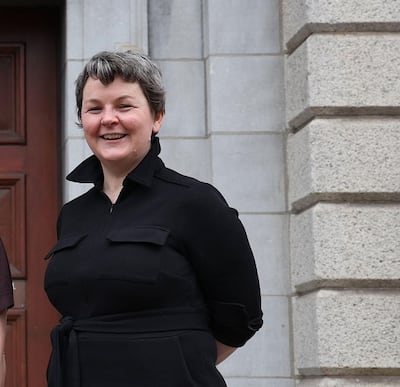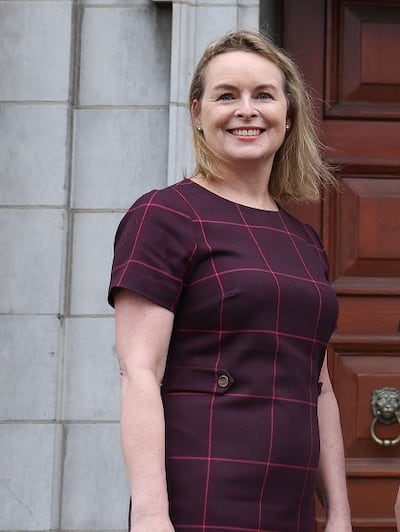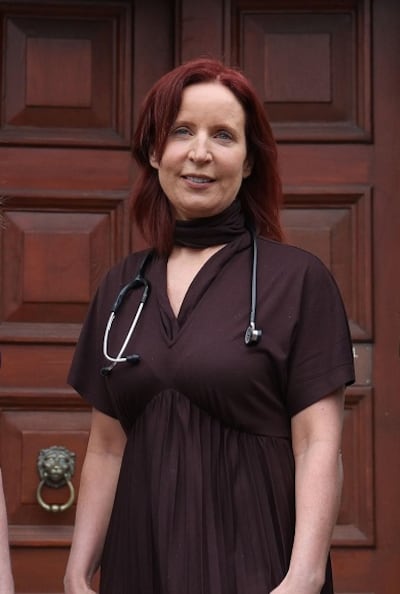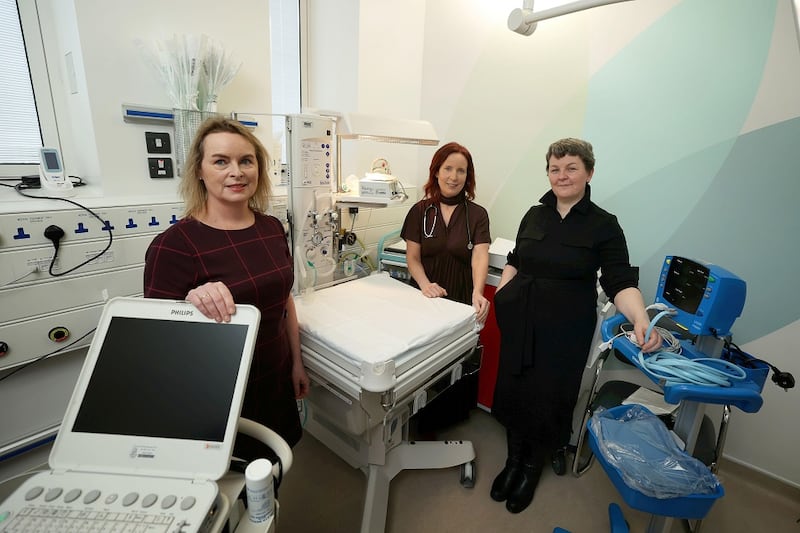Doctors who combine research with clinical work can be inspired by a particular patient to explore potentially better ways of providing care for all.
Take Prof Mary Higgins, a consultant obstetrician and gynaecologist at the National Maternity Hospital (NMH) in Holles Street, Dublin, and associate professor at University College Dublin (UCD). She is involved in a large research study on using artificial intelligence (AI) to identify women's risk of pre-eclampsia, a common and unpredictable complication of pregnancy, which can be life-threatening for both mother and baby. Not only does she recall a patient whose "horrendous" experience of pre-eclampsia is part of the motivation for this research, but Higgins herself developed the condition.

The woman on her mind was cleared while pregnant to fly home to Dublin from Dubai, but then became unwell on the flight with pre-eclampsia. By the time she reached the maternity hospital she was seriously ill and her baby daughter died.
"Obviously she is looking back and saying, 'if I hadn't got on the plane . . . If I had been able to get into a hospital sooner, would there have been a different outcome?' "That's why we are doing this," says Higgins of the AI_PREMie study, backed by Science Foundation Ireland, led by UCD biochemistry professor Patricia Maguire, and involving all three of Dublin's maternity hospitals. They are looking to use AI to predict a pregnant woman's risk of pre-eclampsia based on the blood sample taken at her booking visit in a maternity hospital.
The aim is to establish a testing method within five years, “which would be amazing”, says Higgins. While her own experience of the condition didn’t end in tragedy, she still remembers “the uncertainty in the week or so before my daughter was born; then making decisions about further children based on that”.
Her baby, Evie, was delivered at 31 weeks and spent nine weeks in neo-natal care.
To mark International Women’s Day, March 8th, Higgins is one of three woman doctors to talk to The Irish Times about the importance – and joy – of their research in a busy maternity hospital. Not only does it lead to improvements for the women and infants under their care but there’s also the personal satisfaction of helping to make a difference far beyond the hospital walls.
Higgins and her obstetrician colleague, Prof Fionnuala McAuliffe, are both academic consultants at the NMH. This means their working week is split between clinical work and research/teaching in UCD. But for Dr Anna Curley, a neonatologist at the hospital and associate professor in UCD, research is done in her "spare" time. Not that she is complaining.

“I am in a really nice situation. I love clinical work; I don’t want to move away from that to academics. I want to answer clinical questions.”
Some people might find medical staff talking of “trials” unnerving and imagine it means they’re not quite sure what treatment is best. But Curley would advise any patient anywhere to be wary of doctors who are certain they are right.
“If you have a choice about which hospital to go to, I recommend choosing a hospital with a good reputation for research,” says Curley. It indicates staff are encouraged and enabled to question themselves and work practices. This is how medical advances are made. What’s more, studies have shown that patients in research trials do better, whether they are in the treatment or placebo group.
“What allows you to do research within clinical medicine is the background ethos of where you work,” she says, paying tribute to the lead nurse at NMH’s intensive care unit, Hilda Wall, “an amazing force of nature” and “entirely responsible for the ethos of that unit”.
Higgins says when she went to medical school in UCD during the 1990s, “it used to be said that after six years of qualifying you would be out of date. They’re saying that comes after 18 months now because the research is changing so much.”
Okay we do this, but should we be doing this?
Curley went into co-leading a large research trial with questions around a procedure she learned as a junior doctor. It was a case of, “okay we do this, but should we be doing this”? The results surprised even her in highlighting the potential harm for premature babies and, as a result, future lives will be saved.
The PlaNeT-2 study looked at the threshold for giving premature babies a platelet transfusion. This is often prescribed for bleeding but is also given as a preventative measure in babies who are not bleeding but who have low levels of platelets. “The theory is that babies would be less likely to develop bleeds if they were given platelets,” she explains. Bleeds can lead to babies dying or developing cerebral palsy, so doctors give platelets “just in case”.
Curley was working in Cambridge when the trial was designed and most doctors in the UK and Ireland gave platelets to pre-term babies when they dropped below a certain level – either 25×109/L or 50×109/L. In the US, doctors tended to treat at higher levels.
The purpose of the trial was to assess whether waiting until the platelets dropped to 25 was as safe as transfusing earlier, when they were at 50. Both are acceptable clinical practices but she wanted to know if one was better.
Some 660 pre-term babies were recruited over six years for the trial, in 43 centres in the UK, Ireland and the Netherlands. Each was randomly allocated to getting platelets either at a higher or lower level. Rates of mortality and major bleeding between the two groups were then compared.

“As researchers/clinicians, we felt that there would be no difference and we would save babies from getting blood products unnecessarily,” says Curley. Having grown up in Ireland at the time of people contracting HIV and Hepatitis C through transfusions, she was cautious about blood products.
In fact, the trial demonstrated an even more compelling case for waiting until platelets dropped to 25, rather than intervening at 50. It found that 26 per cent of the babies in the 50 (higher threshold) group died or had a major bleed compared, to 19 per cent in the lower group.
“If we treat at 25 instead of 50, one baby out of 14 babies we treat will not die or have a major bleed,” says Curley. That’s a “phenomenal” difference.
In talking about this study, she doesn’t want to scare people off the idea of platelet transfusions for pre-term babies.
“They are lifesaving in certain situations but they are not necessary or can cause harm in others.” It’s about tailoring the treatment to where it’s needed and to minimise the risk of side effects.
“I often get asked if it’s biologically plausible that platelets cause harm. I respond that it’s biologically implausible that they wouldn’t have other effects.”
Results of the trial were published in the hugely influential New England Journal of Medicine in 2019, not long before the start of the pandemic. Due to Covid-19, Curley and the team didn’t get immediate follow-up opportunities to present at international conferences, although Zoom has helped. The day after we talk, she is due to address 800 participants from all over the world at an on-line conference.
“That’s 800 people you can tell about the research and encourage to change.” She regards the ability to motivate and to collaborate as key skills for leading research.
It's not that I believe you should bring homemaker's skills into research but, if you have them, use them
“You have to pull people along with you,” says Curley, who believes women are naturally more collaborative. If you have had to get children out to school every morning, your motivational skills are well honed, she quips as a mother of three children, aged 14, 11 and 10. “It’s not that I believe you should bring homemaker’s skills into research but, if you have them, use them.” It’s about “human contact; making people realise they are playing a part in something bigger”.
Ten years ago, Higgins says she would have agreed that women are better at collaborating. “The older I get, the more I go ‘men are great’,” she laughs, explaining that she has learned to appreciate the value of having multiple, different opinions. “It’s a pain sometimes but so valuable in care of patients.”
Curley’s team are following up the trial babies at age two and already seeing that children in the lower group are doing better at that stage as well. Meanwhile, they have secured a €1.2 million grant for the next round of research, PlaNeT-3, looking at what amount of platelets to give.
While of course Curley wants to be the best doctor she can be in the NMH, “research makes a bigger difference”, she says. “I can help babies in the US, Germany, Russia, Middle East or wherever.”
Prof McAuliffe is director of the UCD perinatal research centre, which she founded at the NMH in 2014. This enables hospital staff across various disciplines and research scientists to come together, she says, “to solve pregnancy problems and to improve pregnancy nutrition and wellbeing”.
One piece of research under her auspices, to be published in April, explored the potential link between diet and mental health in early pregnancy. At a time of physiological and hormonal change, coupled with shifts in social and family dynamics, pregnant women are at increased risk of low mood. They are also more susceptible to nutritional deficiencies.
Led by Cara Yelverton, the study was based on a large sample size of 1,500 women in early pregnancy. It found that the consumption of fibre, certain B vitamins and folate correlate with better wellbeing. “To think that folic acid, fruit and veg and whole grains could improve wellbeing – that’s a nice message, particularly in early pregnancy where there is a lot of adjustment to the new situation,” says McAuliffe.
An ongoing "Latch On" study at NMH, along with maternity units in Wexford, Kilkenny and Mullingar, is looking at how breastfeeding rates can be improved among women with higher body weight, who can face both physical and psychological issues.

“There’s a lot of biological factors – firstly the larger breast size and larger nipple, so it’s harder to latch the baby on,” says McAuliffe. “There is some evidence that women with higher body weight have less of the milk letdown hormone, prolactin, so they produce less milk and that makes it harder.”
Many Irish women, no matter what their size, don’t feel comfortable breastfeeding. Earlier research looked at what had helped women with higher BMI to breastfeed for at least six months. What came out as crucial was having a supportive partner, along with the sense that society was more open now to breastfeeding in public.
On foot of that finding, the NMH introduced a special antenatal class on breastfeeding for partners to attend, whereas before the breastfeeding class was just for women. The hope is that this will give partners a better understanding of the likely challenges and empower them to support the woman in not giving up, instead of suggesting the baby has a bottle.
The Latch On study is now looking at the effect of having this class, along with one-to-one lactation support in the hospital after birth and a follow-up consultation at six weeks. The results are due to be published in the autumn.
There are two patient groups active within the perinatal research centre, both of which came out of the “Rolo” study in 2007. It had recruited 800 mothers in early pregnancy and randomly assigned them to a low glycaemic index (GI) diet, such as brown versions of bread and rice etc, or them continuing their usual diet. The aim was to see if eating low more GI foods would reduce excessive birth weight and these mothers and children have been followed ever since.
Researchers meet the Rolo parents’ advisory group annually to see what might be of interest to them for future studies. Recently they started a young people’s Rolo advisory group too, which is the children themselves, aged nine to 11, and their older siblings.
“We’re discussing with them what it’s like to be in a research study, what are the things that is important to them,” says McAuliffe. It’s another way of harnessing patient inspiration.



















